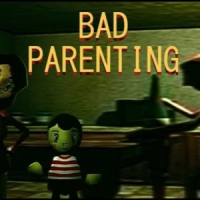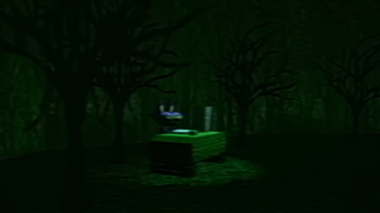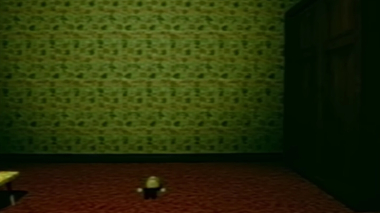I still vividly remember the first time I booted up Bad Parenting on my gaming console. The title itself intrigued me to explore a world where conventional family values are turned on their head, and parenting becomes a whimsical, even chaotic, adventure. I was drawn in by the promise of unconventional narrative and quirky humor. As I navigated the starting menu, I felt a mix of anticipation and curiosity, wondering what unexpected challenges would come my way.
The Unorthodox Narrative
From the onset, I recognized that Bad Parenting was not going to be a run-of-the-mill simulation. The storyline allowed me to see the world from an unconventional perspective. I found myself playing a character responsible for a rag-tag group of youngsters, each with unique quirks and unpredictable needs. The game’s narrative weaves bizarre family dynamics with surreal humor. Every twist in the plot felt like a deliberate choice to subvert typical expectations about both parenting and responsibility, which resonated with my own desire for something refreshingly different in gaming.
Engaging Gameplay Structure
The gameplay in Bad Parenting is a fine blend of strategy, quick decision-making, and occasionally, lighthearted chaos. I was challenged to balance the various needs of the children while dealing with absurd events that popped up unexpectedly. The mechanics often required me to plan ahead, whether I was coordinating a breakfast routine or handling an unexpected mishap during a seemingly ordinary day. The smooth integration of mini-games within the larger narrative kept the action engaging and offered a sense of accomplishment as I managed my chaotic household.
Intuitive and Responsive Controls
One of the aspects I appreciated as I got absorbed in the game was how intuitive the controls felt right from the start. The responsive nature of the interface allowed me to quickly adapt while juggling different responsibilities. Although the controls were simple enough for newcomers, they also provided enough depth that mastering them became part of the challenge. Each action, whether it was preparing a meal or shooing a mischievous youngster away from trouble, felt meaningful due to the precision of the input-response loop.
Distinctive Visual Aesthetics
Visually, Bad Parenting is a treat for the eyes. The game boasts an eccentric art style that combines vibrant colors with quirky character designs. As I moved through the various levels, the surreal landscapes and bizarre household environments added to the overall theme of unpredictability. I found that the exaggerated facial expressions and playful character animations both amused and frustrated me at times, reinforcing the rollercoaster experience of life as an unconventional caregiver. The aesthetics were not only charming but also contributed significantly to storytelling, subtly hinting at the chaos and humor to come with each new scene.
The Soundscape and Music
No immersive game experience is complete without a fitting soundscape, and here Bad Parenting truly excels. I was particularly impressed by the eclectic track list that managed to perfectly match the game’s offbeat tone. Sound effects, ranging from comical exclamations to soft background tunes during peaceful moments, enhanced the immersion. The audio design was thoughtful, transitioning seamlessly between energetic scores during frantic chase sequences and slower melodies that set a light, reflective pace when the chaos momentarily subsided. For me, the combination of these audio cues alongside the gameplay created an unforgettable atmosphere.
The Challenge of Balancing Chaos and Order
The core of Bad Parenting revolves around managing unpredictable events with seemingly unpredictable outcomes. I often found myself caught between moments of intense action and periods of frantic planning. The game consistently provided me with choices that tested my prioritization skills. For instance, deciding whether to attend to a minor crisis at home or embark on an impromptu errand felt as gripping as any climactic decision in high-stakes drama. These choices were further complicated by a system that rewarded creativity in solving problems, making every playthrough a unique blend of chaos-induced strategy.
The Role of Humor in Gameplay
Humor plays a central role in Bad Parenting, and I must say it is one of the game's most delightful features. I laughed unexpectedly at many of the curveballs thrown my way, from exaggerated expressions to over-the-top scenarios that pushed the limits of absurdity. The game doesn’t take itself too seriously, and this self-awareness made the experience all the more enjoyable. The dialogue, interspersed with tongue-in-cheek commentary, gave the impression that the developers had a genuine understanding of the ridiculousness inherent in everyday life. Throughout my play session, I was constantly surprised by the game’s ability to oscillate between whimsical misadventure and moments of genuine insight into the challenges of raising a spirited bunch.
Innovative Family Dynamics
I was particularly impressed by how the game reimagined traditional family roles. Each child in the game displayed a distinct personality, complete with a mix of endearing quirks and baffling behaviors. From quick-witted remarks in moments of distress to outlandish requests that defied logic, the interactions felt authentic within the game’s context. I found it both amusing and relatable as I attempted to manage each behavior with the right mix of firmness, indulgence, and humor. The dynamics allowed a degree of personalization in how I could interact with each character, giving me a real sense of agency in managing the family while dealing with unintended consequences.
Exploring the In-Game World
The world within Bad Parenting is rich with detail and invites exploration. What started as a seemingly mundane household gradually unfolded to reveal secret rooms, hidden mini-stories, and interactive objects that carried their own whimsical narratives. I took my time roaming around the virtual home and even outside in neighborhood settings, unveiling layers of complexity that delighted me with every discovery. This constant state of exploration not only contributed to the replay value but also made me appreciate the developers’ commitment to crafting a fully realized, albeit eccentric, world.
Customization and Personalization Options
An unexpected delight in my journey was the depth of customization available. As I progressed through the game, I had the opportunity to adjust numerous settings and aesthetics, from decorating the family home to tweaking character appearances and behaviors. This level of detail allowed me to create a personalized version of chaos that suited my tastes. Experimenting with different setups, I found it rewarding to see how subtle changes in the environment could drastically affect the gameplay experience. The customization options provided a layer of complexity that made every session feel distinct and tailored to my decisions, reaffirming the game’s commitment to an immersive user experience.
Learning Curve and Replayability
Even though Bad Parenting presents a steep learning curve, I found this challenge to be an intrinsic part of its charm. Mastering the controls and grasping the interplay between various game systems took time, but every moment spent learning was a worthwhile investment. I discovered that each playthrough presented different scenarios and outcomes, primarily because the game is designed to throw unforeseen challenges that require quick thinking. This inherent unpredictability encourages multiple sessions, each of which unveils new dimensions of strategy and management. There were times when I returned to certain areas to see if a different approach could yield fresh results, highlighting the game’s replayability and depth.
Unconventional Humor and Emotional Depth
While the zaniness of Bad Parenting is often its primary lure, I was impressed by the game’s ability to infuse genuine moments of emotional depth amid the chaos. Without ever taking a solemn tone, the story occasionally hinted at underlying themes of responsibility, love, and perseverance. I experienced a mix of laughter and relief as I navigated scenarios that, despite their absurdity, depicted the inescapable challenges of caregiving. The narrative did not shy away from exploring the emotional rollercoaster that comes with juggling countless responsibilities, a sentiment that kept me reflective even as I laughed at the game’s ludicrous scenarios.
Interactive Challenges That Keep You on Your Toes
Every twist in the game's plot raised the stakes, ensuring that I was never quite sure what to expect next. Whether it was a sudden mishap at mealtime or an unexpected visit from a quirky character, each event forced me to adapt rapidly. This element of unpredictability continuously piqued my curiosity and kept me engaged on a deep level. The mini-challenges interwoven with the main narrative were so varied that they sometimes felt like entirely new games within the larger framework. I enjoyed the sense of urgency that these interactive challenges provided, compelling me to rethink my strategies and manage time as a scarce resource.
Complexity in Simplicity
One of the most amusing aspects of Bad Parenting was how the game managed to pack complex decision-making into seemingly simple everyday scenarios. From overseeing mealtime routines to ensuring that household chores were completed in a timely manner, every decision felt loaded with consequences. I was continuously impressed by the game’s ability to transform the mundane into a riveting test of skill and intuition. I found that even the smallest decisions could unravel into a series of hilariously complicated events, a concept the developers clearly embraced with a knowing wink. The combination of simplicity in design with deep underlying mechanics kept the gameplay both accessible and intellectually stimulating.
Moments of Unscripted Chaos
What truly sets Bad Parenting apart is its celebration of unscripted chaos. Throughout my playthrough, there were numerous moments where the in-game world took on a life of its own, spontaneously diverging from any plan I had in mind. During a particularly memorable session, I found myself juggling multiple crises simultaneously; it was a delightful challenge that tested my ability to think on my feet. Instead of feeling overwhelmed by these sudden shifts, I embraced them as opportunities for creative problem-solving. The game’s design encourages this kind of adaptive play, and I thoroughly enjoyed the sense of empowerment that came with each successfully averted disaster.
A Rich Tapestry of Experiences
In playing Bad Parenting, I embarked on a journey that defied conventional boundaries of simulation games. The experience was not solely about managing a chaotic household; it was about navigating a world filled with humor, heart, and unpredictable challenges. Every aspect, from the whimsical aesthetic choices to the carefully crafted soundscapes, seemed to work in harmony to produce an experience that was as thought-provoking as it was entertaining. I found that this multifaceted approach allowed me to appreciate the game more deeply with each session, discovering new layers of meaning and enjoyment that I had not anticipated.
My Ongoing Adventure
As my time in Bad Parenting grew, I became increasingly drawn into its persistent cycle of humorous upheaval and subtle emotional exploration. The game's structure continuously reminds me that every day presents an entirely new set of challenges and unpredictable moments that demand both skill and empathy. I took pride in how each successful encounter boosted my sense of accomplishment, even though the methods to achieve that success were sometimes unorthodox. The balance between managing everyday routines and handling unforeseen events offered a broad canvas that kept me invested over long stretches of gameplay. The interplay of order and chaos, when viewed through the lens of my own experiences, brought a sense of realism to an otherwise fantastical setting.
Reflections on the Experience
As I look back on my adventures in Bad Parenting, I realize that the game offers more than just a series of challenges; it presents an opportunity to immerse oneself in a vibrant, unpredictable universe. Every quirky turn and every unconventional task reminded me why I was drawn to the such a bold reimagining of everyday life. The seamless blend of narrative, engaging gameplay, and artistic design created an experience that was both stimulating and refreshing. With each new scenario, my understanding of what it means to juggle responsibilities, all while enjoying the inherent absurdity of life, deepened. I found that the game not only entertained me but also subtly invited me to reflect on the nuances of care, the humor in chaos, and the unexpected joys found in the imperfect journey of parenthood.
Pros

- Unconventional narrative that offers a fresh and quirky perspective on everyday challenges
- Engaging mini-games integrated into the larger storyline that keep the gameplay dynamic
- Intuitive controls that respond well even in chaotic situations
- Vibrant and unique visual aesthetics that enhance the overall immersive experience
- Extensive customization options that allow personalized tweaks to environments and characters
- An eclectic soundtrack paired with well-timed sound effects that enrich various gameplay moods
Cons

- A steep learning curve in the early stages might deter some players
- Some repetitive scenarios can reduce variation during prolonged gameplay
- Unpredictable events occasionally create moments of overwhelming chaos



